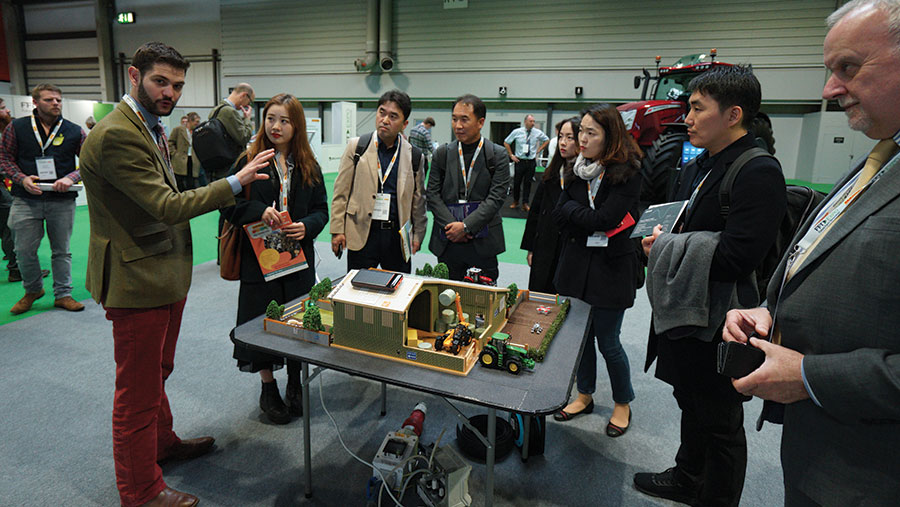Tech expo shows how radical approaches can transform farming

Farmers need to be prepared to adopt radical new approaches to farming to reap the full potential of current and future agritech developments.
That was one of the messages from the closing panel discussion at the recent Future Farm Technology Expo, on how technology will transform farming in the next 10 years.
Abby Rose, a farmer, technology developer and co-founder of the Farmerama podcast, said that new technology would liberate farmers from the limitations imposed by the requirements of tractors and combines.
See also: How to avoid drone insurance and licensing pitfalls

She said intercropping – growing more than one crop in the same field – and integrating trees with field crops were examples of approaches new technology could support.
“We need more diversity,” she said. “The more diversity you have in a field, the less likely it is to be taken down by pests or disease.”
Kit Franklin, who led the high-profile Hands-Free Hectare project at Harper Adams University, agreed that multicrop fields were an interesting opportunity.
Franklin’s team has just embarked on a new Hands-Free Farm project, extending the Hands-Free Hectare concept to a 35ha field. He said, in future years, the team may try to grow multiple crops in 2m-wide strips in the field – for example, wheat and beans.
Andrew Lazenby, chief executive of both the Royal Agricultural Society of England and Innovation for Agriculture, agreed that the focus of new technology should not be on incremental improvements.
“We have to get away from this idea that the future is all about how we get an extra tonne of wheat yield or an extra kilo of liveweight gain,” he said. “We’ve got to use the technology to make sure we are doing the right thing, on the right piece of land, at the right time.”

Ben Scott-Robinson, co-founder of The Small Robot Company, said the start-up was making good progress towards its vision of treating individual plants rather than entire fields or sections of fields.
Dan Halliday, head of digital and precision solutions and telematics at New Holland parent CNH Industrial, predicted that robots and smart use of data would take off on high-value crops, such as champagne grapes, in the next 10 years. But he said tractors and other more traditional kit would still have an important part to play for some time.
More than 2,000 farmers attended 30-plus presentations, panel discussions and live interviews during the two-day event, held at the National Exhibition Centre in Birmingham.
Smart start-ups
A clutch of new agritech companies showed off their latest technology in the Start-up Zone at Future Farm Technology Expo.
Crop4Sight
The Crop4Sight app gives potato growers insights into their crop performance, calculating yield potential and other key performance metrics.
Drone AG
The Skippy Scout app automates leaf-level crop data collection and analysis using drones and artificial intelligence (AI) technology.
Fotenix
Fotenix uses multispectral sensors to provide real-time information on plant status, such as disease.
Glas Data
Glas Data’s tool enables farmers to visualise data and generate reports on a smartphone.
Hummingbird Technologies
Hummingbird’s crop-specific AI tools analyse data from drones, aircraft and satellites.
LettUs Grow
LettUs Grow designs aeroponic irrigation and control technology for indoor and vertical farms.
MycoNourish
MycoNourish produces custom strains of fungi that work in symbiosis with specific crops to enhance yields.
N2 Applied
N2 Applied’s technology adds nitrogen from air to manure or biogas digestate to generate ammonium nitrate fertiliser.
PES Technologies
PES Technologies is working on a handheld tool to allow farmers to measure the soil microbiome.
Smartbell
Smartbell uses precision sensors and machine learning technology to continuously monitor calf health.
Stable
Stable is an online insurance platform to help farmers protect against commodity price volatility.
